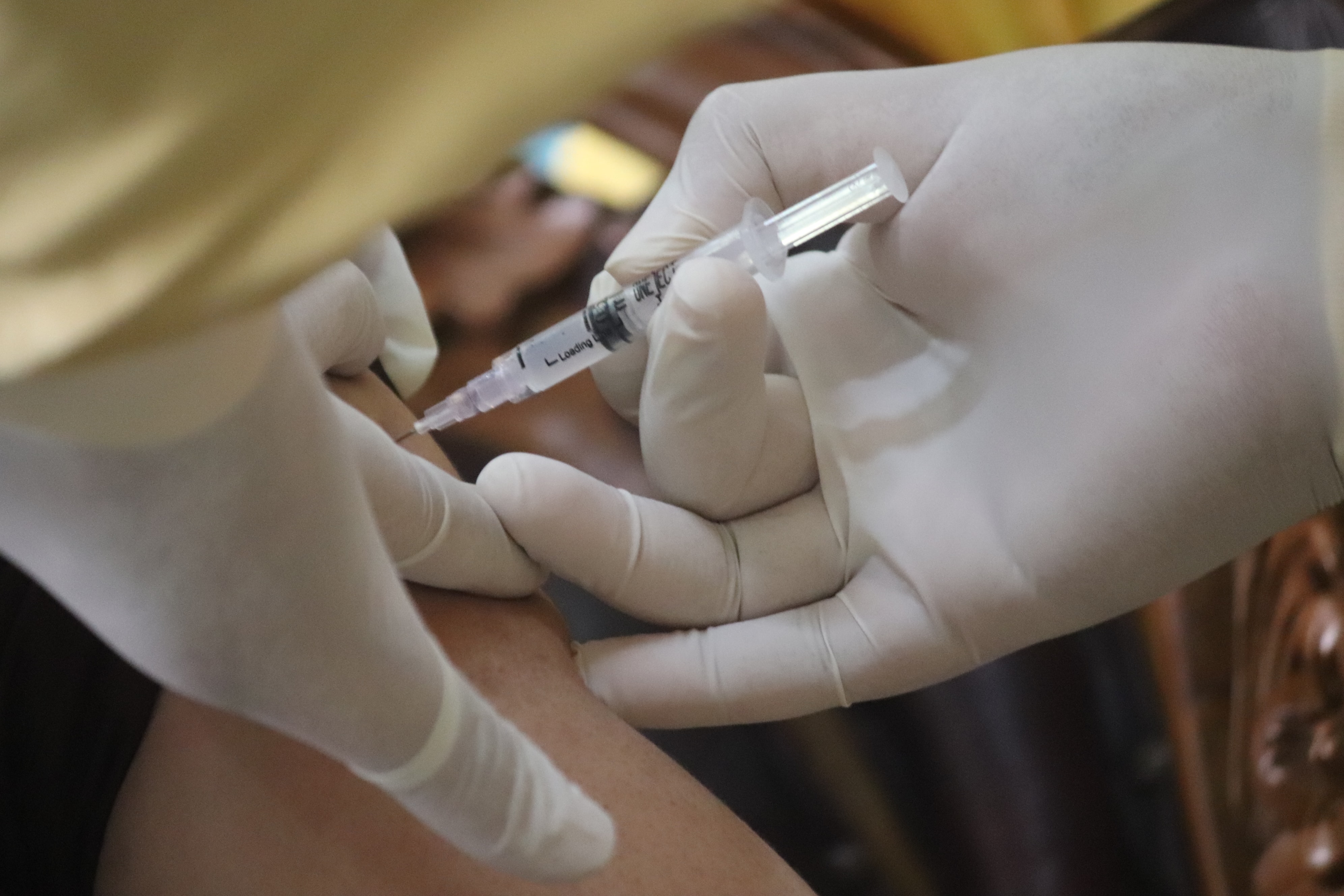
Pilot study on barriers and facilitators of influenza vaccination for children (2-6 years) in DK
Investigators
Anna Schneider-Kamp (SAMF), Christine Stabell Benn (SUND, DIAS Chair),Søren Askegaard (SAMF, DIAS Chair), Garreth Millward (HUM, DIAS Fellow),Shriram Venkatraman (SAMF, DIAS Fellow)
Project description
Currently, and as a novelty, the Danish Health Authority is recommending vaccination of children 2-6 years of age against influenza for the 2022/23 influenza season (1), leaning on a small risk of complications and noting children to be drivers of influenza infection in the broader society.
This recommendation was first put in place in the winter of 2021/22. The coverage was low compared with the routine childhood vaccines, with only 29.3% of the target group getting vaccinated (2). This coming winter, it is reasonable to likewise expect a less-than-perfect uptake of this recommendation in the light of the confluence of two recent developments:
First, there is an increased focus on children’s infection risks among parents (3), continuing a trend that parents increasingly perceive themselves as risk managers of their children (4). Second, and concomittantly, there is an increasing focus on benefits and risks of vaccine, both for all age groups in realation to COVID-19 vaccination programs (5) and, particularly, for children in the light of (6).
Specifically for children, the Danish Heatlh Authority intially recommended COVID-19 vaccines to children aged 5-11 years in November 2021 (7), but the coverage only reached ~45% (8). By June 2022, the Danish Health Authority stated that it had not been necessary to vaccinate the 5-11-year-old children (9).
This lead to some strong reactions from parents who had felt pushed to vaccinate their children despite not perceiving their kids at high risk for severe COVID-19 (10). Some have expressed that the incident has decreased their trust in all recommendations from health authorities.
Therefore, we aim to conduct an exploratory in-depth investigation into the mechanisms underlying barriers and facilitators of vaccination among parents of children 2-6 years of age. We propose a pilot project to collect qualitative data on the perception, attitudes, and strategies of parents. We plan to purposively sample informants for this investigation such that they vary according to the social, economic, and cultural resources available to them. The data collection and recruitment are interleaved with the goal of stopping the recruitment process when confidence for theoretical saturation has been reached (11). The data analysis employs a conceptualization of health capital (12) that allows a deep investigation into the mechanisms underlying vaccine hesitancy.
Ultimately, the data collected and the insights obtained have the potential to lay the foundation for developing a questionnaire-based tool for assessing vaccine hesitancy among parents using an approach inspired by the qualitative pre-test interview approach (13).
Thus, this pilot project serves as a basis for a joint research proposal for developing such a tool for assesing and addressing vaccine hesitancy among parents.
In summary, we aim to achieve the following four objectives:
- Conduct the qualitative data collection in the autumn and winter of 2022/23;
- Compare it to the actual vaccination coverage obtained in Denmark (data available from SSI);
- Identify barriers, facilitators, and trends regarding the influenza vaccination of children; and
- Prepare a joint application to the Carlsberg Foundation and/or DFF (Objective 4).
The investigators comprise two DIAS chairs and two DIAS fellows from three faculties, as well as one Talent Track researcher from SAMF. The pilot project contributes to the development of interdisciplinarity at DIAS and DIAS visibility, by involving and integrating historical (Garreth Millward), clinical (Christine Stabell Benn), medical sociological (Anna Schneider-Kamp), and medical anthropological (Søren Askegaard, Shriram Venkatraman) perspectives.
With the overarching aim to further our understanding of the societally highly relevant topic of vaccine hesitancy, the proposed research is well aligned with other SDU initiatives such as Human Health and SDU’s work on Sustainable Development Goals (SDGs). More specifically, the proposed project addresses goal 3 (ensure healthy lives and promote well-being for all at all ages) and goal 10 (reduce inequality) of SDGs.
References
- Danish Health Authority. En rask beslutning [Internet]. [cited 2022 Sep 12]. Available from: https://www.sst.dk/da/influenza/boern
- Statens Serum Institut. Influenzasæsonen - opgørelse over sygdomsforekomst 2021/22 [Internet]. [cited 2022 Sep 19]. Available from: https://www.ssi.dk/sygdomme-beredskab-og-forskning/sygdomsovervaagning/i/influenzasaesonen---opgoerelse-over-sygdomsforekomst-2021-22
- Fersch B, Schneider-Kamp A, Breidahl KN. Anxiety and trust in times of health crisis: How parents navigated health risks during the early phases of the COVID-19 pandemic in Denmark. Health Risk Soc. 2022 Jan 10;
- Stjerna ML, Worth A, Harden J, Olin Lauritzen S. Risk as a relational phenomenon: a cross-cultural analysis of parents’ understandings of child food allergy and risk management. Health Risk Soc. 2017 Nov 17;19(7–8):351–68.
- Schneider-Kamp A. COVID-19 Vaccine Hesitancy in Denmark and Russia: A qualitative typology at the nexus of agency and health capital. SSM - Qual Res Health. 2022 Dec;2:100116.
- Szilagyi PG, Shah MD, Delgado JR, Thomas K, Vizueta N, Cui Y, et al. Parents’ Intentions and Perceptions About COVID-19 Vaccination for Their Children: Results From a National Survey. Pediatrics. 2021 Oct 1;148(4):e2021052335.
- Danish Health Authority. Vaccination af de 5-11-årige børn skal være med til at stoppe smitten [Internet]. [cited 2022 Sep 19]. Available from: https://www.sst.dk/da/nyheder/2021/vaccination-af-de-5-11-aarige-boern-skal-vaere-med-til-at-stoppe-smitten
- Statens Serum Institut. Kommunalt | Covid-19 Vaccinedashboard [Internet]. [cited 2022 Sep 19]. Available from: https://experience.arcgis.com/experience/9824b03b114244348ef0b10f69f490b4/page/page_3/
- TV2 News. Set i bakspejlet fik vi ikke meget ud af at vaccinere børnene, erkender Brostrøm - TV 2 [Internet]. nyheder.tv2.dk. 2022 [cited 2022 Sep 19]. Available from: https://nyheder.tv2.dk/samfund/2022-06-22-set-i-bakspejlet-fik-vi-ikke-meget-ud-af-at-vaccinere-boernene-erkender-brostroem
- Forældre rasende efter vaccineudmelding fra Brostrøm: - Jeg er virkelig skuffet - TV 2 [Internet]. nyheder.tv2.dk. 2022 [cited 2022 Sep 19]. Available from: https://nyheder.tv2.dk/samfund/2022-06-26-foraeldre-rasende-efter-vaccineudmelding-fra-brostroem-jeg-er-virkelig-skuffet
- Rowlands T, Waddell N, McKenna B. Are We There Yet? A Technique to Determine Theoretical Saturation. J Comput Inf Syst. 2016 Jan 1;56(1):40–7.
- Schneider-Kamp A. Health Capital: Toward a conceptual framework for understanding the construction of individual health. Soc Theory Health. 2021;19(3):205–19.
- Buschle C, Reiter H, Bethmann A. The qualitative pretest interview for questionnaire development: outline of programme and practice. Qual Quant. 2022 Apr 1;56(2):823–42.